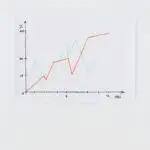Scalability, Adoption, and the Battle for Ethereum’s Future
In 2025, Ethereum remains the dominant Layer 1 blockchain for decentralized applications—but its success comes at a cost. High gas fees, network congestion, and limited throughput have pushed developers and users to embrace Layer 2 (L2) scaling solutions. These platforms extend Ethereum’s capabilities by processing transactions off-chain while inheriting its security guarantees.
Among dozens of contenders, Arbitrum, Optimism, and zkSync have emerged as the most prominent Layer 2 networks. Each offers distinct advantages, unique technology stacks, and growing ecosystems. This article breaks down how they compare in terms of architecture, user experience, real-world adoption, and the road ahead.
Why Layer 2 Solutions Matter in 2025
Ethereum, as powerful as it is, wasn’t designed for global scale. Its base layer can handle roughly 15 transactions per second (TPS), while global financial systems require thousands.
Layer 2s address this bottleneck by executing transactions off-chain and submitting compressed proofs or summaries back to Ethereum. This results in:
- Faster and cheaper transactions
- Improved dApp scalability
- Reduced congestion on the Ethereum mainnet
These benefits aren’t theoretical anymore. In 2025, Layer 2 networks routinely handle more daily transactions than Ethereum L1, with TVLs (Total Value Locked) in the tens of billions.
1. Arbitrum: The Ecosystem Leader
Arbitrum, developed by Offchain Labs, is an Optimistic Rollup that has become the most widely adopted L2 by both developers and users.
Technology
Arbitrum processes transactions off-chain and assumes they are valid unless challenged—hence “optimistic.” Fraud proofs can be submitted during a challenge window, giving Ethereum the final say.
Key Strengths
- Massive dApp support: GMX (decentralized perpetuals), Radiant Capital (lending), and Treasure DAO (gaming) are native to Arbitrum.
- Low fees with high throughput: Gas costs are routinely under $0.10, even for complex smart contract executions.
- Arbitrum Orbit: In 2025, Arbitrum launched Orbit—a framework allowing developers to build their own app-chains secured by Arbitrum. It’s gaining traction among enterprise-grade and gaming projects.
Adoption & Growth
Arbitrum currently leads the L2 race in TVL, developer activity, and daily active users. Major DeFi platforms like Aave, Uniswap, and Curve run on Arbitrum, offering full cross-compatibility with Ethereum. Arbitrum’s DAO also controls one of the largest treasuries in crypto, giving it significant firepower to incentivize innovation.
2. Optimism: Scaling Ethereum’s Collective Vision
Optimism, another Optimistic Rollup, differentiates itself with a deep focus on public goods funding and an ambitious vision to build a “Superchain.”
Technology
Optimism uses fraud-proof mechanisms similar to Arbitrum, but it’s positioning itself more as an ecosystem layer. Its OP Stack allows anyone to build modular L2s that can interoperate natively.
Key Strengths
- Modular and open-source: The OP Stack is being adopted by other chains (like Base by Coinbase), creating a network of Optimism-based rollups.
- Governance-first approach: Through the Optimism Collective, funding is directed toward open-source builders and Ethereum-aligned initiatives.
- Superchain thesis: Optimism aims to unify all OP Stack rollups into a single interoperable system—sharing liquidity and security.
Adoption & Growth
The most prominent chain using OP tech is Base, built by Coinbase. In 2025, Base has become a powerhouse of consumer-focused dApps, from social media platforms like Farcaster to fintech-like stablecoin wallets. Optimism itself is also home to many DeFi staples and new tools focused on real-world asset integrations and public infrastructure. The OP token is used to vote in governance decisions, fund grants, and incentivize ecosystem growth.
3. zkSync Era: Zero-Knowledge Proofs in Action
zkSync, developed by Matter Labs, leads the charge in zk-Rollup technology—a more advanced but complex form of L2 scaling.
Technology
Unlike Optimistic Rollups, zkSync uses zero-knowledge proofs (ZKPs) to validate batches of transactions. Once a ZK proof is generated, Ethereum instantly accepts the result—no need for challenge windows or waiting periods.
This makes zkSync:
- Faster to finalize transactions
- More secure by design
- Cheaper to withdraw assets back to Ethereum
Key Strengths
- zkEVM support: zkSync supports Ethereum’s programming language (Solidity), so developers can deploy smart contracts without learning a new system.
- Superior user experience: With instant confirmations and faster finality, zkSync is ideal for payments, NFTs, and gaming.
- Native account abstraction: zkSync was one of the first to implement account abstraction natively—enabling gasless transactions, session keys, and wallet recovery features built into the protocol.
Adoption & Growth
While zkSync had a slower start than Arbitrum or Optimism, its technical superiority has attracted next-gen projects—especially in DeFi automation, gaming, and AI+blockchain intersections.
Major protocols like Yearn Finance and Argent Wallet have now migrated some of their infrastructure to zkSync. Its user base is growing steadily, driven by integrations with fiat on-ramps and retail-friendly wallets.
Head-to-Head Comparison: 2025 Snapshot
| Feature | Arbitrum | Optimism | zkSync Era |
| Rollup Type | Optimistic | Optimistic | zk-Rollup |
| Finality Time | ~7 days withdrawal | ~7 days withdrawal | Near-instant |
| Ecosystem Size | Largest dApp presence | Growing via OP Stack | Focused, high-tech stack |
| Notable Projects | GMX, Radiant, Uniswap | Base, Synthetix, Velodrome | Argent, Yearn, zkPay |
| Custom Chains | Arbitrum Orbit | OP Stack / Superchain | zkPorter (for scaling) |
| Dev Experience | Full Solidity Support | Full Solidity Support | zkEVM + AA innovations |
| Unique Advantage | Ecosystem dominance | Public goods & Base | Fast, secure zk-proofs |
Use Cases: Which L2 Is Best for What?
For DeFi Power Users:
Arbitrum offers the broadest array of DeFi apps, robust liquidity, and familiar UX. If you’re a trader, yield farmer, or DAO participant—Arbitrum is the natural choice.
For Builders and Startups:
Optimism’s OP Stack gives startups a fast way to launch modular chains. Its public goods focus attracts open-source devs and Ethereum-aligned projects.
For Consumer Apps and Innovation:
zkSync shines in areas where speed, low cost, and user-friendliness matter most—like payments, gaming, or social apps. Its built-in account abstraction sets it apart for mobile-first dApps.
Challenges Ahead for Layer 2s
Even as Layer 2s grow, they face a few shared hurdles:
- Liquidity fragmentation: Each L2 is its own silo, making asset movement across L2s inefficient.
- Security reliance on Ethereum: While L2s inherit Ethereum’s security, bugs in their own systems can still cause major issues.
- User confusion: With multiple L2s, app-chains, and rollups, onboarding new users remains a UI/UX challenge.
- Interoperability standards: No universally adopted protocol exists yet for seamless L2-to-L2 communication, though efforts like Chainlink CCIP and LayerZero are making strides.
Looking Forward: Layer 2s Are the Real Ethereum
The Ethereum of the future won’t live on Layer 1—it will live on Layer 2s. The base layer will become a settlement hub, while all user activity—trading, gaming, identity, payments—moves to L2s. In 2025, that future is materializing fast. Whether you’re a DeFi native, a builder launching the next protocol, or a retail user trying to escape gas fees, understanding the L2 landscape is now essential.
Arbitrum, Optimism, and zkSync are leading the charge. And the race is just getting started.





